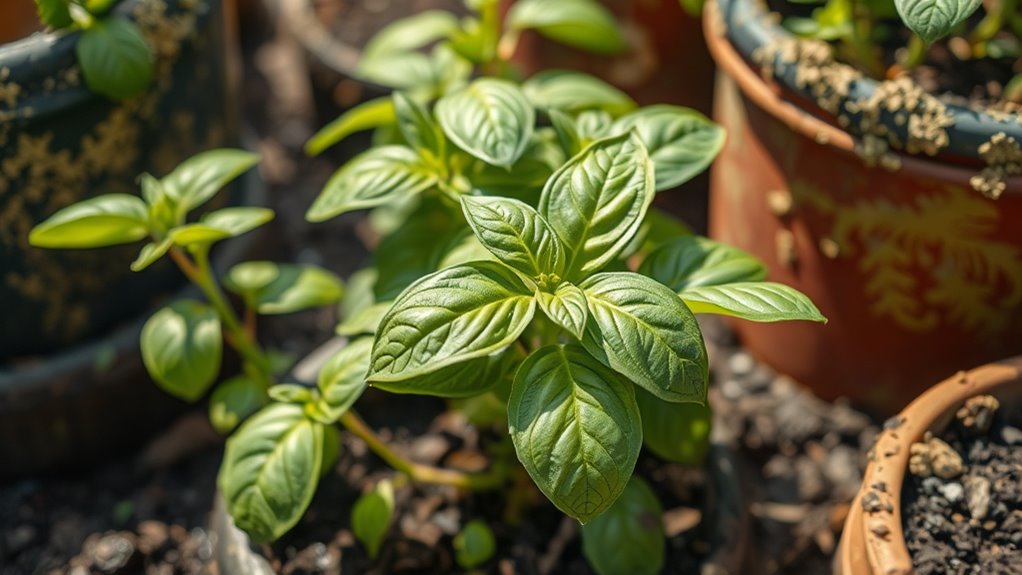One Mistake That’s Ruining Your Herb Garden
You’re overwatering your herbs, which drowns roots and leads to yellowing leaves, moldy soil, and stunted growth, even if you’re sticking to a regular schedule. Stop watering right away, let the soil dry out fully, then inspect and trim any damaged roots before repotting. Always check moisture levels first to prevent this issue. Master these fixes and uncover more tips to keep your herb garden thriving.
The Common Error Undermining Herb Health
Have you ever noticed your herbs looking wilted or stunted?
In herb gardening, overwatering is a common problem you’re often overlooking, as it drowns roots and hinders nutrient uptake.
You’re exacerbating this by watering on a fixed schedule instead of checking soil moisture first.
Use well-draining soil and pots with holes to promote air flow, and water only when the top inch is dry. Additionally, ensuring your herbs receive adequate sunlight exposure is crucial for their overall health and growth.
This practical approach prevents ongoing herb gardening problems, fostering healthier growth.
Signs Your Garden Is Affected
Recognizing the signs of overwatering in your herb garden is essential for quick intervention.
You’ll notice yellowing leaves that droop despite moist soil, signaling root stress.
Mold on the surface, mushy roots, and a foul odor indicate excess water.
Stunted growth and brown spots on leaves show the damage, while early leaf drop warns of potential root rot.
Watch closely for these clear indicators. Additionally, understanding essential watering tips can help you maintain the right moisture levels for healthy herbs.
Practical Steps to Fix the Issue
Once you spot the signs of overwatering, it’s time to act quickly and implement these practical steps to revive your herb garden. First, stop watering and let soil dry completely. Next, remove plants gently, inspect roots, and trim any rot. Feel the heartbreak turn to hope with this guide:
| Heartbreaking Sign | Empowering Fix |
|---|---|
| Wilting leaves | Repot in dry soil |
| Yellowing stems | Prune damaged roots |
| Soggy, smelly soil | Improve drainage now |
To successfully revive your herbs, be sure to identify issues related to their care and adjust accordingly.
Preventative Strategies for Future Growth
To keep your herb garden thriving long-term, you’ll implement a few key strategies that target common pitfalls like overwatering.
Always test soil moisture before watering to prevent saturation.
Choose well-draining soil and pots with holes for excess water escape.
Monitor weather patterns to adjust hydration needs, and space plants properly to reduce disease risk.
Prune regularly to maintain airflow and remove stressed foliage early.
In addition, consider incorporating beginner-friendly herbs such as basil and mint, which are known for their resilience in indoor environments.
Tips for Optimizing Herb Productivity
Maximizing your herb garden’s productivity starts with selecting the right varieties for your climate and soil, as these thrive under specific conditions and yield more abundantly. Make sure you water consistently, avoiding over-saturation, and prune regularly to encourage growth. Use organic fertilizers to boost nutrients, and position plants for ideal sunlight—most need six hours daily. Monitor pests early to maintain healthy yields. Additionally, consider using container gardening techniques to optimize space and improve drainage, which can lead to healthier plants.

